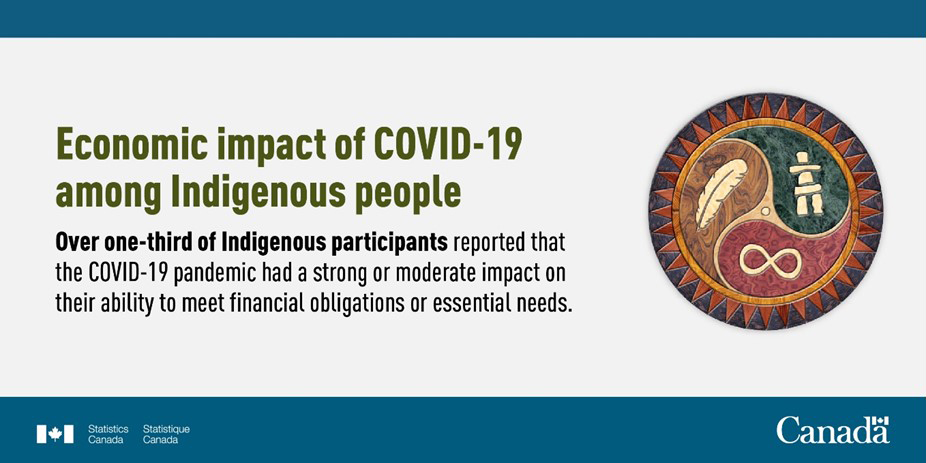Chief Statistician's virtual roundtable discussions: 2021 Census of Population questionnaire
Archived Content
Information identified as archived is provided for reference, research or recordkeeping purposes. It is not subject to the Government of Canada Web Standards and has not been altered or updated since it was archived. Please "contact us" to request a format other than those available.
Welcome
Anil Arora
Chief Statistician of Canada
2021 Census content overview
Lynn Barr-Telford
Assistant Chief Statistician
Social, Health and Labour Statistics
"Quality data informs good decision-making and helps us better understand our country and the challenges we face. The census is the backbone of our national data collection exercise. It offers all Canadians a chance to count and be counted."
2021 Census
- For over 100 years, the census has been the storyteller of our nation
- 2021 Census even more important in data-centric society
- Canadians are key to paint a picture of their Canada
- Timely, relevant and high quality 2021 Census data will benefit communities, businesses, organizations
- Census content developed with Canadians and for Canadians
- Extensive consultations and discussions, as well as thorough testing using world-class expertise and scientific evidence were conducted
- Returning content from 2016 for ongoing trend analysis
- New questions to measure Canada's growing diversity and to ensure results are more reflective of Canadian society
- Adapting to COVID-19 to keep delivering on the Census
- Safety of everyone is paramount
- Online feature makes it safe and easy to participate
- Continued support and collaboration of Canadians are appreciated
Family, demography and activity limitations
"We use Statistics Canada's neighbourhood information to help develop profiles to support service delivery at the community level. We use information, such as unemployment rates and families living in a low income situation, to provide support where it is needed the most."
Better reflection of Canada's diverse population
- Changes made to better reflect how Canadians describe themselves and to reflect the diversity of the population
- Now referring to sex at birth rather than simply sex
- New question on gender includes non-binary and transgender
- References to "same-sex" and "opposite-sex" relationships removed
Activities of daily living
- Inclusive approach for visible and non-visible disabilities
- Increasingly important with an aging population
- Clarify how to respond to activities (e.g., walking, climbing, learning) for young children
Languages, ethnocultural diversity and immigration
(including citizenship, religion, population groups, minority language education rights)
"Census data has been used to create our dynamic, interactive profiles of sub-municipal geographies in Peel. These tools provide many potential agencies with the ability to make decisions on data that we make available in interactive tools like the ward profiles and the newcomer tool."
Language and Minority language educational rights
- Data key to the vitality of official language minority communities
- Minor changes to home language and language of work questions
- Five questions on minority rights holders added to short form
- Key piece of a data ecosystem: new questions, when combined with existing ones and other data sources, are important to estimate need for services, such as educational programs
Ethnic or cultural origins
- Data that is more representative of Canada's diversity
- Revised ethnic origin question allows respondents to report their origins free of the influence of examples on the questionnaire
- Encouraging Canadians to self-identify their ethnic and cultural origins
- New link to list of extensive and diverse examples better reflects Canada's growing diversity
Religion
- Question included in the Census every 10 years since 1871
- Helps to fully understand the diversity of our population
- New link to list of examples will assist respondents in providing more detailed responses (e.g., Orthodox Judaism, Sunni Muslim)
Immigration and citizenship
- Immigration is a key driver of population growth in Canada
- Introduction of a two-part citizenship question
- Reducing response burden through collaboration with Immigration, Refugees and Citizenship Canada on use of administrative immigration records:
- immigrant status / year of immigration / admission category / applicant type
Population groups
- Equity, diversity and inclusion: where all have access to, can participate in and benefit from what Canada has to offer
- Meeting data needs of the Employment Equity Act
- A key source of disaggregated data to understand socioeconomic disparities
Indigenous peoples

Description - Economic impact of COVID-19 among Indigenous People
Economic impact of COVID-19 among Indigenous people
Over one-third of Indigenous participants reported that the COVID-19 pandemic had a strong or moderate impact on their ability to meet financial obligations or essential needs.

Description - Percentage of Indigenous People living below the poverty line
| Total | Female | Male | |
|---|---|---|---|
| percent | |||
| Total Indigenous population | 24.0 | 25.4 | 22.5 |
| First Nations people | 29.6 | 31.0 | 28.0 |
| Métis | 17.8 | 19.0 | 16.4 |
| Inuit | 19.3 | 19.8 | 18.8 |
| Non-Indigenous population | 13.3 | 13.5 | 13.0 |
| Source: Statistics Canada, Census of Population, 2016. | |||
"Our countries are very similar in our Census: vast geographies and our need to work closely with First Nations people in our work.
The StatCan collection innovations that we have mirrored have brought us better outcomes for our populations who have benefitted from greater choice in the way we interact."
- A distinctions-based approach
- Updated 2021 question will ask if the person is:
- First Nations / Métis / Inuk (Inuit)
- Two new questions on Métis and Inuit populations were added:
- in the online questionnaire, only respondents who identified as First Nations, Métis or Inuit will be asked the new questions
Métis
- More detailed information to support policies and programs for the Métis population
- Meeting the need for distinction between Métis
- A new question will help distinguish between:
- Citizens of Métis governments who have signed the Canada-Métis Nation Accord
- Métis outside of these entities
Inuit
- Better informing decisions of Canada and Inuit governments, and organizations
- Responding to information gap regarding whether Inuit people were:
- enrolled under—or a beneficiary of—an Inuit land claims agreement
- Canada has obligations to Inuit under land claims agreements
Education, labour, commuting, and Veterans

Description - Did you know?
Did you know?
There were 728,700 teachers and professors in Canada as of 2016.
Source: Statistics Canada, Labour Force Survey, CANSIM table 282-0142.
"Datasets from Statistics Canada have been instrumental in analysing the impacts of demographic change and socio-economic circumstances on the education system in areas such as student achievement, capital planning, and teacher supply. From these datasets policy and programs."
Education
- A skilled labour market is key to Canada's future
- Meeting the changing needs of the workforce— to develop training and other programs
- 2016 question on school attendance divided into two parts for better clarity, current terminology, reduced burden, and better accuracy
"For 20 years, Statistics Canada's partnership with Canadian universities across the country has not only promoted major research advances in the quantitative social and health sciences, but at the same time accelerated the translation of research to inform critical areas of public policy for Canada."
Labour
- Capturing Canada's dynamic labour market in a growing digital environment
- New questions to measure quality of employment and attachment to the labour force, especially among vulnerable populations
- one, the main reason for working part-time, and two, the main reason for not working full-year
- Class of worker now includes a subcategory on job permanency
- permanent position, fixed contract, short-term contract, seasonal work, casual contract
Commuting
- The census is the only national data source on mode of commuting, distance to work, time leaving for work and commuting time
- Data key to assess impacts on the environment and for planning transportation infrastructure
- Added and updated questions to meet realities of increased urbanization
- Added "Select all modes of transportation used to commute to work"
- Question changes to cover interim stops to/from work
- Question changes to improve accuracy of car-pooling data
Veterans and military service
- Data to better serve Veterans and families in need
- New question in short form to address need for comprehensive data source on Canadian Armed Forces (CAF) Veterans
- Statistics Canada will work collaboratively with Veterans Affairs Canada (VAC) following the 2021 Census to keep the list of Veterans up-to-date using administrative sources
Housing, income and expenditures

"Developing and building communities is a complex process that takes many years of research and planning. Accurate and up-to-date Statistics Canada data enables the industry to understand the housing and employment needs of our growing region so that we build the appropriate housing, employment spaces and communities."
Housing
- Access to homeownership and the cost of living of high importance to Canadian households.
- Expanded collection of shelter costs to include all housing on reserves
- Added user and occupancy fees collected in band housing to complement existing data in nationwide housing affordability research
Income and expenditures
- Supports policies and government programs for vulnerable populations and helps businesses to provide new products and services
- 2021 Census to continue to use administrative files to produce data for individual, family and household income
- Child care expenses and support payments questions help produce statistics based on the Market Basket Measure (MBM)
- Provide information at low levels of geography on subpopulations and particularly vulnerable groups
Thank you
Questions?
For more information: The road to the 2021 Census
Your sherpas
- Family, demography and activity limitations
Laurent Martel (Laurent.martel@canada.ca), Marc Lachance (marc.lachance@canada.ca), Mike Burns mike.burns@canada.ca - Languages, ethnocultural diversity and immigration
Jean-Pierre Corbeil (jean-pierre.corbeil@canada.ca) - Indigenous peoples
Heather McLeod (heather.mcleod@canada.ca), André Bernard andre.bernard@canada.ca - Education, labour, commuting and Veterans
John Zhao (john.zhao@canada.ca), Vincent Dale (vincent.dale@canada.ca), Scott Perrie (scott.perrie@canada.ca) - Housing, income and expenditures
Andrew Heisz (andrew.heisz@canada.ca), Eric Olson (eric.olson@canada.ca)
2021 Census
- Information at your fingertips, available online!
- website
- questionnaire
- a new Census Book
- fact sheets
- technical reports
- Date modified:



